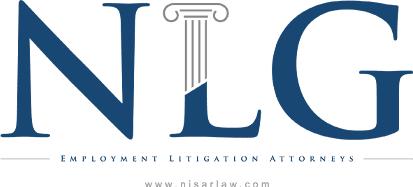
LGBT Discrimination
Fighting For Your Best Interest
New York LGBT Discrimination Lawyer
At Nisar Law Group, P.C., we are dedicated to providing comprehensive legal services to individuals who have experienced discrimination based on their sexual orientation or gender identity.
Our team of experienced employment law attorneys in New York, NY is committed to fighting for the rights of the LGBT community and ensuring that they are treated fairly and equally in the workplace.
Why You Need an LGBT Discrimination Lawyer
LGBT discrimination can take various forms, including but not limited to:
- Wrongful termination
- Harassment and hostile work environment
- Denial of promotions or benefits
- Unequal treatment
If you have experienced any form of discrimination based on your sexual orientation or gender identity, it is crucial to seek legal representation from an experienced LGBT discrimination lawyer. Our attorneys possess in-depth knowledge of federal, state, and local laws that protect the rights of LGBT individuals in the workplace.
Our New York LGBT Discrimination Attorney Services
Our LGBT discrimination attorney services include:
- Evaluating your case: We will carefully review the details of your situation and provide you with a comprehensive evaluation of your legal options.
- Legal representation: Our skilled attorneys will represent you throughout the legal process, including negotiations, mediation, or litigation.
- Advocacy and support: We are committed to providing you with the guidance and support you need during this challenging time.
- Compensation and justice: Our goal is to help you seek the compensation and justice you deserve for the discrimination you have endured.
Contact Our NYC LGBTQ Lawyers
If you believe you have been a victim of LGBT discrimination in your New York workplace, don't hesitate to reach out to Nisar Law Group, P.C. Our experienced attorneys are ready to advocate for your rights.
Schedule a consultation with our LGBT discrimination lawyer today by calling (646) 760-6493 or emailing us. We are here to help you fight against discrimination and achieve justice.
Why We're the Right Choice
-
Seasoned Litigators Who Have Handled Numerous Jury & Bench Trials
-
Providing Representation with Clarity, Honesty & Integrity
-
Building Long-Term Affiliations & Relationships
-
Offering Consultations for All Case Types We Handle

-
In good hands!
After 2 years of suffering abuse and discrimination by my bosses, I finally decided to trust Lawyer Nisar to help me gain justice against their abuse.
- Maria -
Able to resolve my case in just 4 months.
Great attorneys to work with. They were upfront with my scenarios and stayed on top of the matter I had with my employer.
- Lidia -
Took his time to listen to everything I had to say.
Listened to everything I had to say and then asked me questions regarding my situation. He really took his time to listen to everything I had to say.
- Bibi


